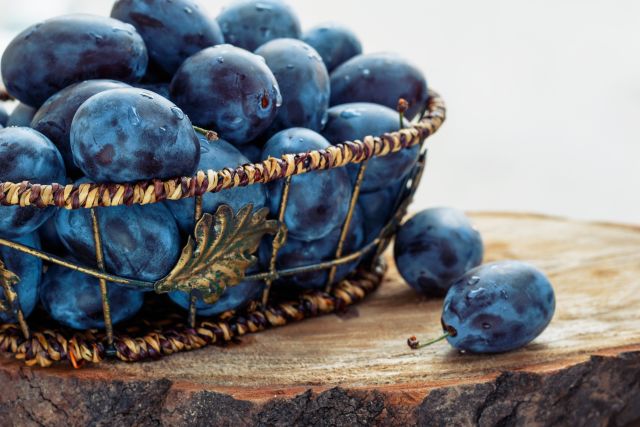Updated on October 28, 2024.
If you're so hungry that you wind up overdoing it at mealtime, try taking the edge off beforehand. These satisfying foods can help keep you satisfied through the day.
Nuts: Having a smidge of healthy fat about 20 minutes before a meal can help tame your appetite. Nuts, such as almonds and walnuts, are good options because they contain fiber, protein, and good fats called omega fatty acids that may help fight inflammation. Nuts also stimulate the production of cholecystokinin (CCK). It's a hormone that not only reduces hunger but slows the emptying of your stomach.
Choose unsalted nuts that are dry-roasted or raw, instead of nuts cooked in oil. Nuts are high in fat and calories, so go easy on them. A small handful equals about one serving of nuts (1.5 ounces).
Dried plums: Thanks to lots of hunger-quelling fiber, this wrinkled, dried fruit formerly known as the prune may help you eat less. One study published in the journal Nutrition Bulletin in 2021 found that people who snacked on prunes had less of an appetite, ate less, and lost significantly more weight over the course of 12 weeks, compared to their starting weight.
Prunes may help you drop pounds because they satisfy hunger in several ways. For one thing, it takes time to chew prunes, which gives your brain a chance to register that you’re eating and helps you feel more full. Their high fiber content also helps slow digestion and aids the release of sugar into your bloodstream.
One serving of prunes equals about three prunes.
Skim milk: If you’re skipping milk to save calories, you might want to think again. Milk is high in protein and bone-friendly nutrients like calcium, phosphorus, magnesium, and vitamin D. Adding skim milk to your diet can help fill you up, so you eat less of other foods. One study published in the Journal of Nutrition in 2021 found that drinking milk before meals was associated with significantly decreased appetite levels and a 33 percent lower calorie intake at meals.
The USDA recommends that adults ages 19 to 50 get 1000 mg of calcium per day. One serving of skim milk (1 cup) contains 299 mg calcium.
Veggies or fruit: Starting lunch or dinner with some apple slices or a veggie salad tossed may reduce the total calories you eat at that meal. Fresh fruit and raw vegetables are full of fiber and nutrients, and typically low in fat and calories. They take up room in your stomach, helping you feel more satisfied.
On salads, try to limit full-fat cheese, creamy dressings, and fried croutons, which contain unhealthy fats and can add extra salt to your diet. Instead, consider healthier alternatives like part-skim mozzarella, lowfat cottage cheese, nuts or sunflower seeds, and lowfat dressings.
Soup: Have a cup of this warm-you-up, comfort food and you may eat less at your next meal. One study published in the journal Appetite in 2007 found that eating soup 15 minutes before a meal was associated with 20 percent lower calorie intake at meals.
Choose broth-based varieties containing filling, high-fiber veggies, lentils, peas, or beans. Vegetable purees (carrot, butternut squash) are also delicious and satisfying. Limit or avoid soups made with cream bases, which can be high in fat and calories. Carefully read labels for store-bought and pre-made soups, which can be very high in sodium, too. Even better, make your own.







